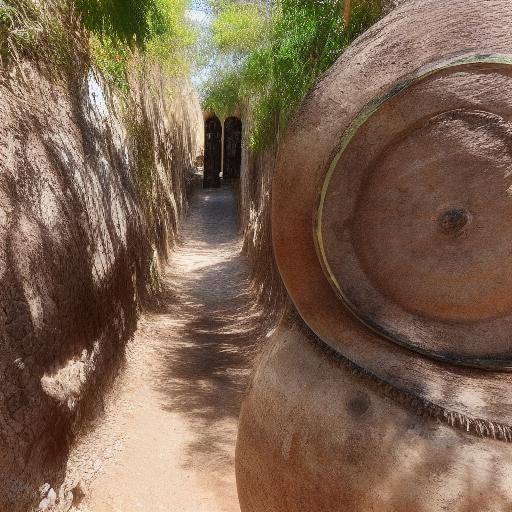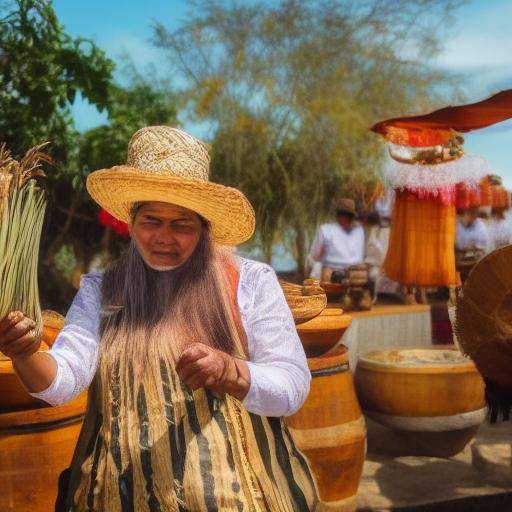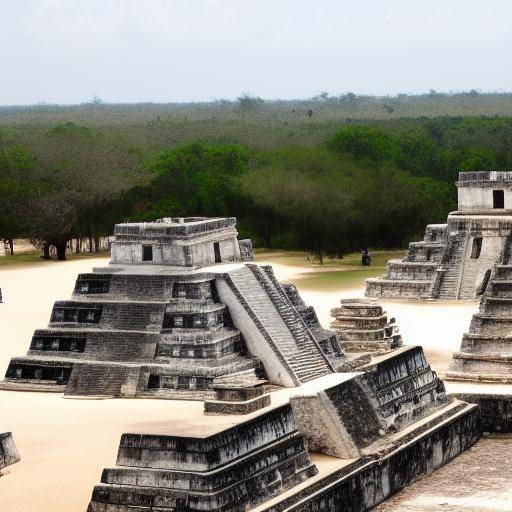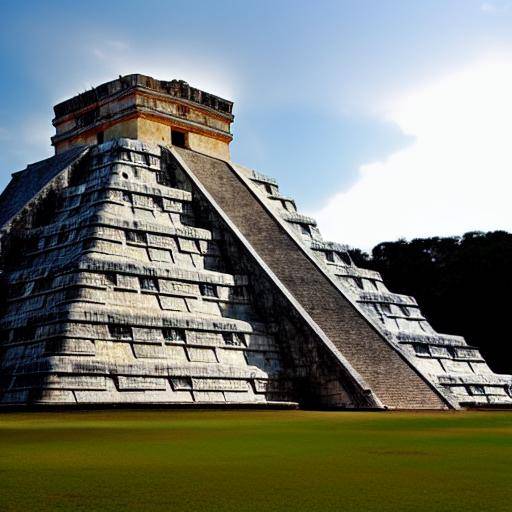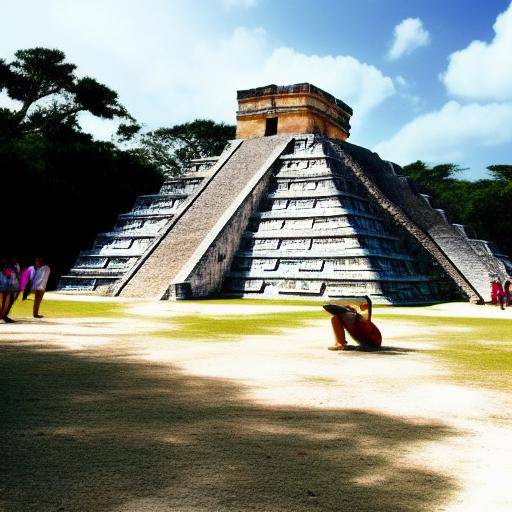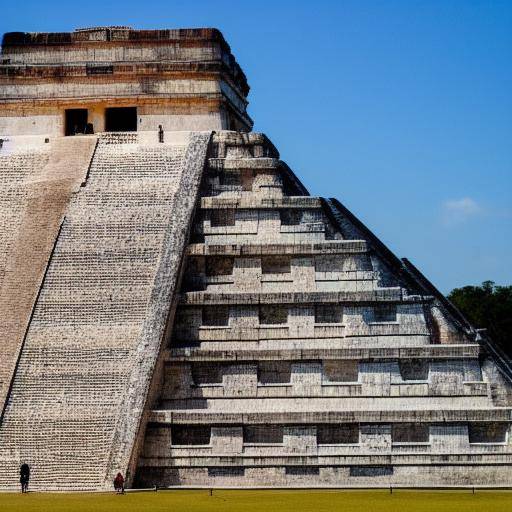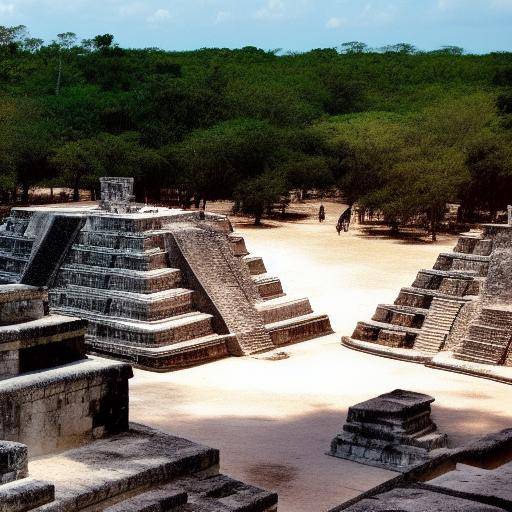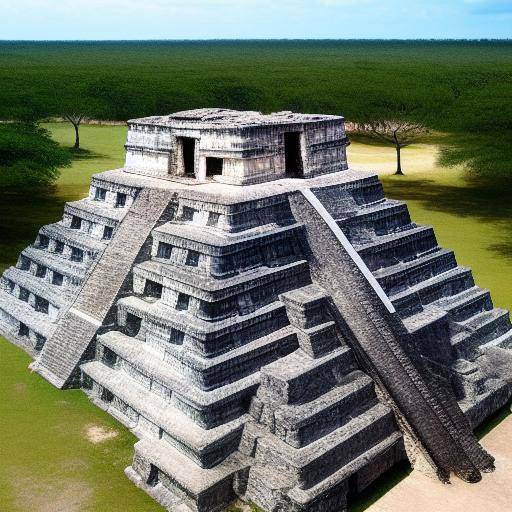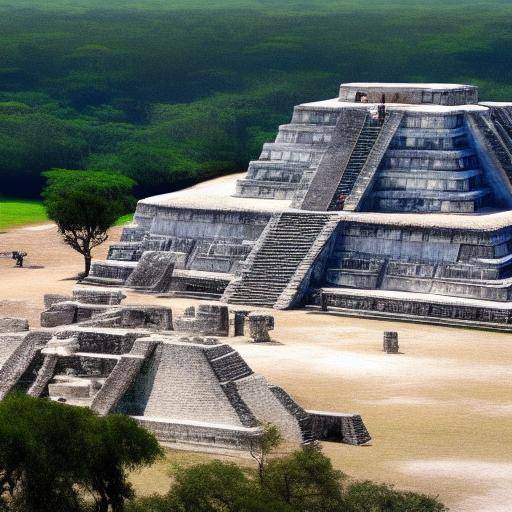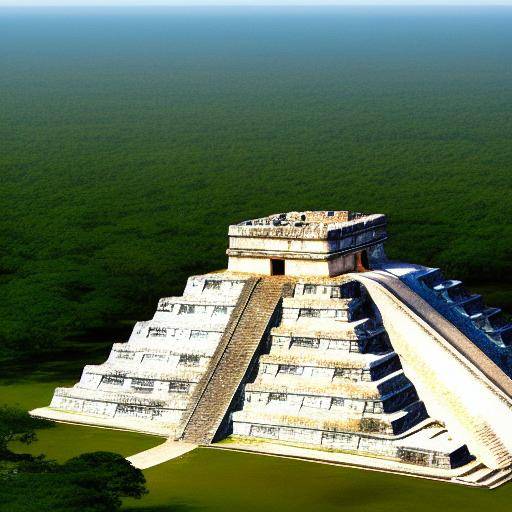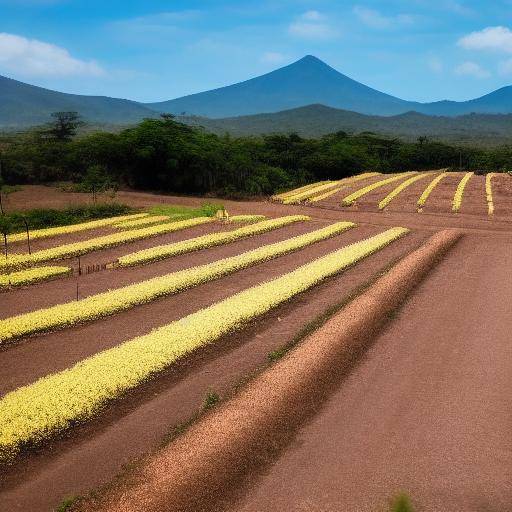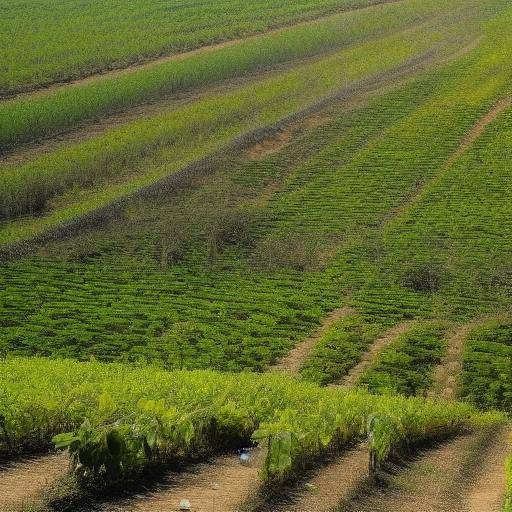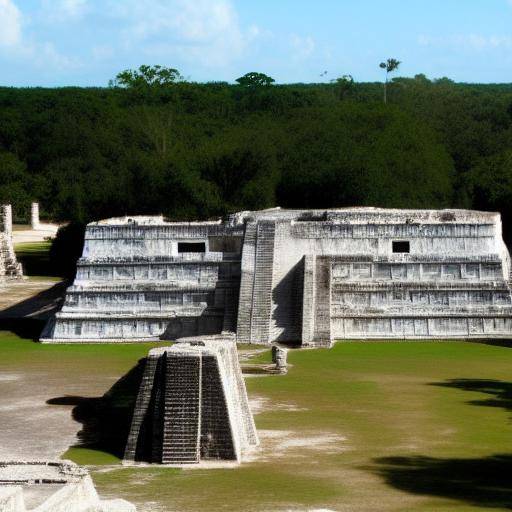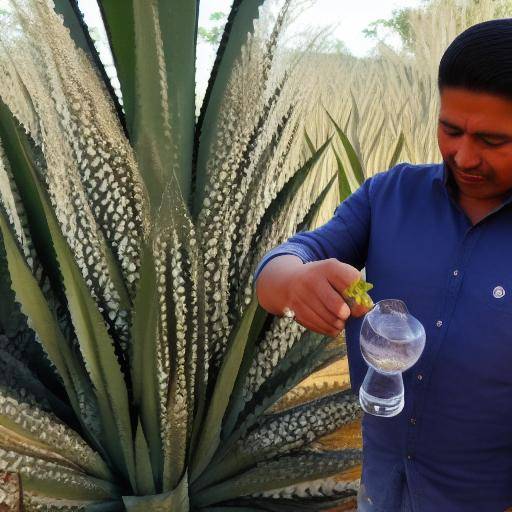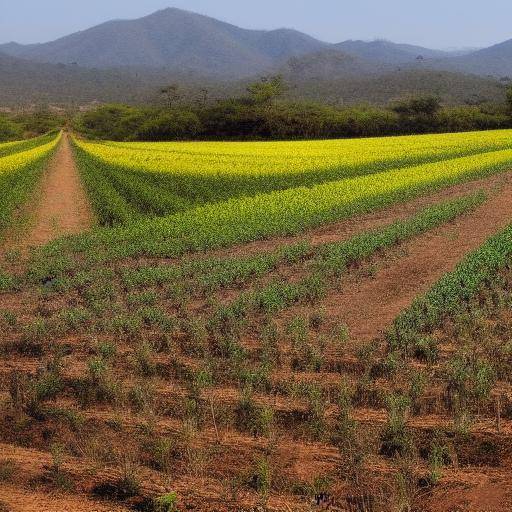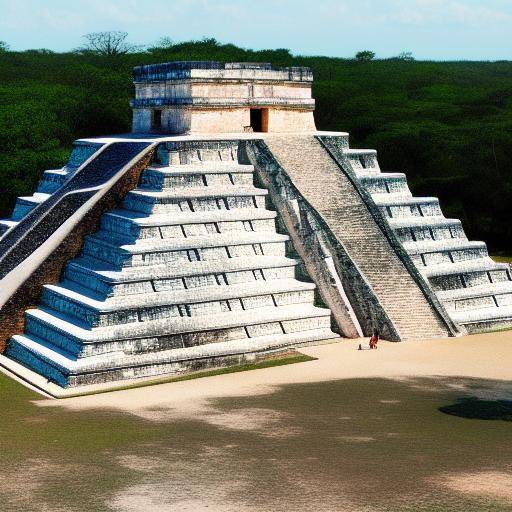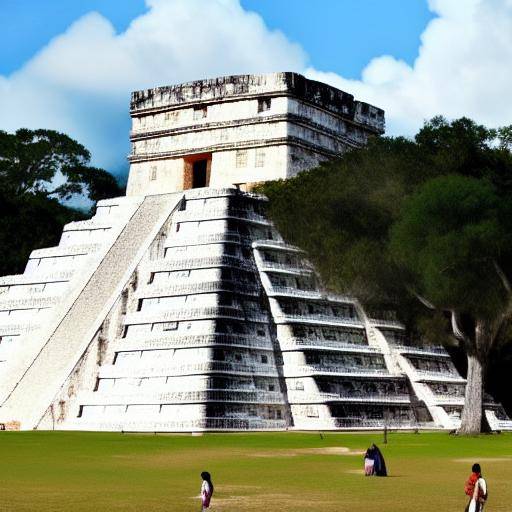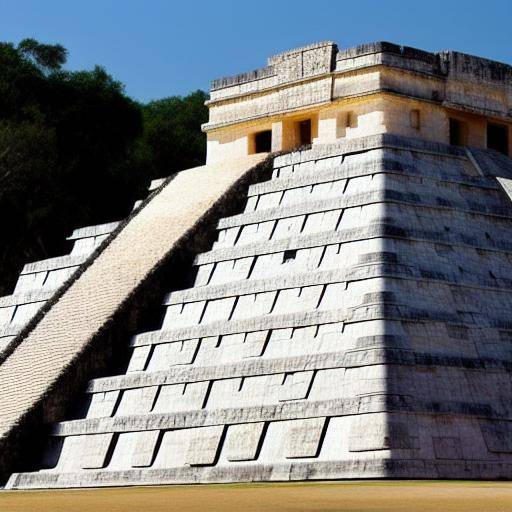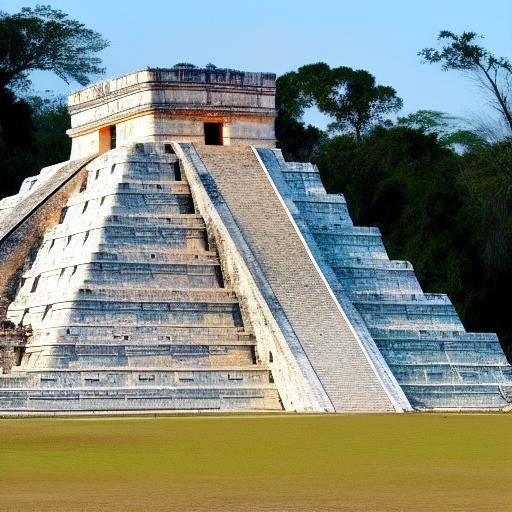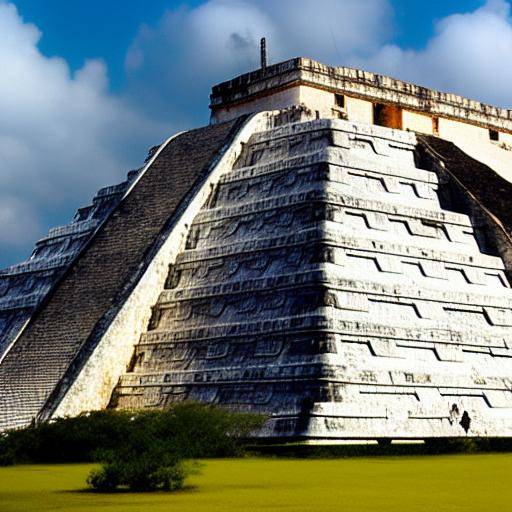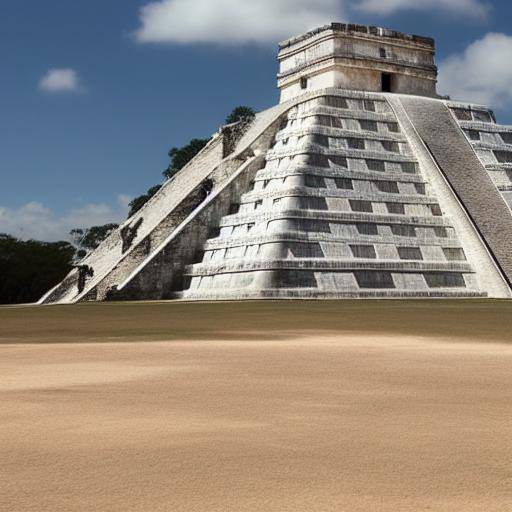
On the peninsula of Yucatan, Mexico, there is an ancient treasure that tells us of the greatness of Mayan civilization: Chichén Itzá. These Mayan ruins contain a rich history and mysteries that have intrigued archaeologists, scientists, and travelers for centuries. In this guide, we will explore science and religion behind Chichen Itza, unraveling their secrets and revealing their importance in the modern world.
Introduction
Chichén Itzá, one of the wonders of the world, is an archaeological site that represents the splendor of Mayan civilization. Its imposing structures, such as the pyramid of Kukulcan, the Temple of Warriors, and the Observatory, testify to the advanced scientific knowledge and deep spiritual connection of this ancient civilization with the cosmos. In this guide, we will discover the fascinating intersection between science and religion in Chichen Itzá, as well as its impact on the culture and history of Mexico.
History and Background
The roots of Chichen Itzá go back to the sixth century AD, when it was founded as a center of political, religious and economic power in the region. Over the centuries, he flourished as an important ceremonial and urban centre, pointing to the development of astronomy, mathematics, architecture, and religious practices of the Mayas. The complex network of buildings reveals an advanced understanding of cosmology and time, reflected in its precise astronomical alignments and complex calendars.
The abandonment of Chichen Itzá in the fifteenth century is an enigma, followed by centuries of mystery and forgetfulness before being rediscovered in the nineteenth century. Since then, its majesty and its enigma have attracted visitors from around the world, making it an icon of Mayan culture and a testimony to its scientific and spiritual legacy.
Analysis in Deep
Chichen Itzá's contributions to science and religion are evident in its monumental architecture, its complex astronomical observations, and its rich repertoire of religious symbolisms. The intersection between astronomy and religion is a fascinating facet of this civilization, where Mayas, through their precise astronomical structures and observations, established a profound link between time, the universe and their religious beliefs.
From the serpents sliding down the stairs of the pyramid of Kukulcan to the precise alignments that mark the solstices and equinoxes, each aspect of Chichen Itzá distills religious meaning and astronomical knowledge. This marriage between science and spirituality bears witness to a holistic understanding of the world that transcends mere academic knowledge.
Comprehensive review
The influence of Chichén Itzá extends beyond its impressive ruins, giving Mexico an invaluable cultural and scientific heritage. The amazing legacy of Mayan civilization enriches the contemporary understanding of astronomy, calendar, architecture, and the cosmovision of nature. In turn, it arouses interest in preserving this legacy and understanding its relevance in the modern world.
Despite the time elapsed, Chichén Itzá continues to captivate scientists and scholars, presenting a challenge and an opportunity to unravel his scientific and spiritual legacy. The preservation and study of this archaeological site provide a crucible of knowledge that enrich our understanding of the past, the present and the future.
Comparative analysis
By comparing Chichén Itzá, the Mayan ruins and Mexico, deep connections and significant contrasts are revealed. While Chichén Itzá represents the epicentre of Mayan splendour on the Yucatan peninsula, the Mayan ruins as a whole scattered throughout the region reveal the extent and diversity of this ancient civilization. Mexico acts as the guardian of this rich cultural legacy, preserving and promoting its understanding between current and future generations.
Practical Tips and Actions
For travelers interested in exploring Chichén Itzá and other Mayan ruins, it is essential to plan your visit in advance, to bring sun protection and water, and to consider hiring a local guide to get a deeper understanding of history and astronomy behind these monuments. Respecting and preserving these sites is crucial to their long-term conservation, as well as to ensure their enjoyment by future generations.
Perceptions of Industry and Expert Reviews
Archaeo-Astronomers, historians and anthropologists offer valuable insights into the scientific and religious aspects of Chichen Itza. His research and analysis give an enriching look at the Mayan cosmovision and its scientific legacy, highlighting the need to preserve and understand the transcendental meaning of these sites.
Case Studies and Practical Applications
The study of Chichen Itzá and the Maya ruins not only enrich our historical and cultural knowledge, but also have practical applications in archastronomy, the conservation of cultural heritage, and education. Studying ancient Maya astronomical practices can reveal valuable knowledge that can be applied in solving modern challenges, from sustainable urban design to understanding astronomical phenomena.
Future Trends and Predictions
The growing interest in the scientific and religious legacy of Chichen Itzá augur a promising future for archaeology, astronomy and understanding of ancient civilizations. As technology and research methodologies advance, new revelations about Chichen Itza and the Mayan ruins are likely to emerge, expanding our understanding of the universe and ancestral wisdom.
Conclusions
Chichén Itzá, with its amazing fusion of science and religion, continues to resonate in the heart of Mexico and the world. By understanding the cultural and scientific value of this site, we can forge greater respect for past traditions and greater appreciation for the complexity of cosmology and spirituality. Exploring these Mayan ruins not only enriches our knowledge, but also our connection with the world around us.
Frequently asked questions
What is the importance of astronomical observations in Chichen Itza?
Astronomical observations in Chichen Itzá reflect the deep connection between religious beliefs and the universe for Mayan civilization. These observations not only guided religious practices, but also showed an advanced knowledge of astronomical cycles.
How does Chichén Itzá relate to other Mayan archaeological sites in Mexico?
Chichén Itzá stood out as an important ceremonial and urban centre in the context of a rich landscape of Mayan ruins scattered around Mexico, each with its own cultural and scientific importance.
What impact does tourism have on the preservation of Chichén Itzá and the Mayan ruins?
Tourism provides resources for the preservation and conservation of these sites, but also poses challenges of environmental and cultural impact. Sustainable tourism management is crucial to balancing these aspects.
What are the current challenges in the preservation of Chichén Itzá?
The challenges include the conservation of structures with regard to the effects of climate and tourism, responsible management of visitors, and protection against looting and destruction.
What scientific inputs have been obtained from research in Chichen Itzá?
The research in Chichén Itzá has provided significant insights on archastronomy, Mayan architecture, and religious practices. These contributions have enriched the understanding of Mayan civilization and its scientific legacy.
How did religious beliefs influence the architecture of Chichén Itzá?
Mayan religious beliefs deeply influenced the architecture of Chichén Itzá, manifesting itself in its complex astronomical alignments and the presence of religious symbolism in its structures.
What is the role of Chichen Itzá in the context of Mayan civilization?
Chichén Itzá represents a crucial centre of political, religious and scientific power in the context of Mayan civilization, highlighting the complexity and influence of this ancestral culture.
In short, exploring Chichen Itza and the Mayan ruins is embarking on a fascinating journey through the past, science and religion. These ancestral places not only enrich our knowledge of the ancient world, but also invite us to reflect on our connection with nature, the universe, and the wisdom of past civilizations.
By understanding the intersection between science and religion in Chichen Itza, we immerse ourselves in a world of millennial wonders and knowledge. These vestiges of the past inspire us to contemplate the immensity of the cosmos and the transcendence of spirituality, providing a unique experience that perpetuates the legacy of Mayan civilization in the heart of Mexico.


